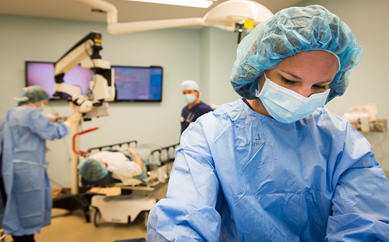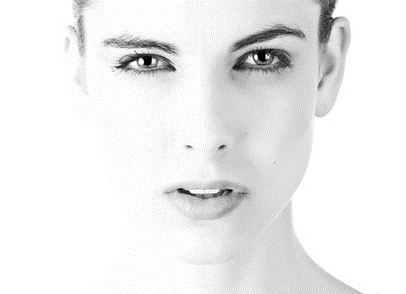Dr. Zahi Abou Chacra graduated from McGill University School of Medicine and University of Montreal in Otolaryngology – Head and Neck Surgery. Zahi Abou Chacra, M.D. is double board-certified by the Royal College of Physicians and Surgeons of Canada, as well as the American Board of Facial Plastic and Reconstructive Surgery. He also works as an Assistant Professor in the Department of Surgery at the University of Montreal. In the following article, Zahi Abou Chacra discusses how few procedures wield the transformative power of rhinoplasty. It’s a delicate art, where precision and an eye for harmony can reshape not only the nose, but the entire visage, achieving a symphony of facial balance and grace.
The nose plays a pivotal role in the overall harmony and balance of the face. Aesthetic rhinoplasty, often referred to as a “nose job,” is a surgical procedure that can bring about a significant transformation in the way your nose complements your facial features. Whether you’re considering rhinoplasty for medical reasons or to enhance your facial aesthetics, understanding how it can improve facial balance is crucial.
Below, Dr. Zahi Abou Chacra discusses the various aspects of aesthetic rhinoplasty, its benefits, and the steps you should take when considering this transformative procedure.
Zahi Abou Chacra Compares Functional Rhinoplasty vs. Aesthetic Rhinoplasty
Before delving into the benefits of aesthetic rhinoplasty, it’s essential to distinguish between functional and aesthetic rhinoplasty. Functional rhinoplasty primarily focuses on improving nasal function, addressing issues such as breathing difficulties, sinus problems, or structural deformities caused by trauma or congenital conditions. On the other hand, aesthetic rhinoplasty is focused on enhancing the visual appearance of the nose while maintaining or improving its functionality.
Types of Aesthetic Rhinoplasty Procedures
Aesthetic rhinoplasty encompasses several different approaches, each tailored to individual needs and preferences. Zahi Abou Chacra notes that there are three primary types of aesthetic rhinoplasty procedures are:
Open Rhinoplasty
Open rhinoplasty is known for its external incision, which is made across the columella, the narrow strip of skin and cartilage separating the nostrils. This incision, which resembles a small “T” or an inverted “V,” provides direct access to the underlying nasal structures. This technique allows for a more comprehensive view and is often preferred for complex cases.
Closed Rhinoplasty
Closed rhinoplasty, also known as endonasal rhinoplasty, involves incisions made entirely inside the nostrils. This technique is less invasive and results in no visible external scarring. Closed rhinoplasty is generally used for less complex procedures.
Filler Rhinoplasty
Filler rhinoplasty involves the injection of dermal fillers, most commonly hyaluronic acid-based fillers, into the nose to reshape and refine its appearance. Unlike surgical rhinoplasty, which requires incisions and alterations to the nasal structures, filler rhinoplasty is performed as an outpatient procedure with minimal downtime. Zahi Abou Chacra explains this it’s a less invasive option for individuals seeking minor adjustments and a quick recovery.
Facial Balance and Harmony: Benefits of Aesthetic Rhinoplasty
Aesthetic rhinoplasty offers numerous benefits for enhancing facial balance and harmony. We will now elaborate on each of these benefits, providing a comprehensive understanding.
Nasal Bridge Adjustments
One of the primary goals of aesthetic rhinoplasty is to address issues related to the nasal bridge. A prominent dorsal hump or an uneven nasal bridge can disrupt the overall balance of the face. Zahi Abou Chacra says that through rhinoplasty, these issues can be corrected, resulting in a smoother, more refined nasal profile. Whether it involves reducing the hump or reshaping the bridge, these adjustments contribute to a more balanced facial appearance.
Nasal Tip Refinement
An overly bulbous or drooping tip can detract from the harmony of the face. Aesthetic rhinoplasty allows for precise refinement of the nasal tip, adjusting its projection, rotation, and shape to achieve a more balanced and harmonious look that complements other facial features.
Nostril Reshaping
Dr. Zahi Abou Chacra explains that the size and shape of the nostrils can significantly affect the overall aesthetics of the nose and, consequently, the face. Aesthetic rhinoplasty can address concerns related to nostril symmetry, size, and proportion. Properly reshaping the nostrils ensures that they harmonize with the rest of the facial features.
Adjusting Size for Facial Proportionality
The size of the nose relative to the rest of the face is a crucial factor in achieving facial balance. A nose that is disproportionately large or small can disrupt the overall harmony. Aesthetic rhinoplasty allows for careful adjustments to the size of the nose to ensure that it complements other facial features, creating a more balanced appearance.
Improves Breathing
While many individuals seek rhinoplasty for aesthetic reasons, some also benefit from improved nasal function. Rhinoplasty can correct structural issues that obstruct airflow, such as a deviated septum or collapsed nasal passages. This not only enhances the aesthetics of the nose but also contributes to better facial harmony by ensuring the nose functions optimally.
Enhances Self Confidence
Aesthetic rhinoplasty doesn’t just improve physical appearance; it can also have a profound impact on an individual’s self-confidence. Dr. Zahi Abou Chacra says that feeling more content with the appearance of one’s nose can lead to increased self-assuredness and a more positive self-image, contributing to overall well-being.
Safe and Effective
Advancements in surgical techniques and technology have made aesthetic rhinoplasty safer and more effective than ever. When performed by a skilled and experienced surgeon, the risk of complications is minimized, and the results are more predictable. This ensures that individuals can achieve their desired facial balance and harmony with a high level of safety.
Preparing for Your Rhinoplasty Consultation
Effective preparation for a rhinoplasty consultation is key to achieving the best possible results. We will now outline ways to identify your goals and choose the most suitable surgeon for your needs.
Understanding Your Goals
Before your consultation, spend some time thinking about what you want to achieve with rhinoplasty. Dr. Zahi Abou Chacra says to consider specific aspects of your nose that you’d like to address, such as a dorsal hump, nasal tip, nostril shape, or overall size. Being clear about your goals will help you articulate your desires to your surgeon.
Collect Visual References
Gather visual references that demonstrate the kind of nose you aspire to have. This can include pictures of celebrities or individuals with noses that you find aesthetically pleasing. Be prepared to show these images to your surgeon to provide a visual representation of your goals. Keep in mind that your results should be in harmony with your facial features and unique characteristics.
Prepare Your Medical History
Be ready to provide your complete medical history, including any pre-existing medical conditions, allergies, medications, and previous surgeries. Your surgeon needs this information to assess your eligibility for rhinoplasty and to plan the procedure accordingly.
Selecting the Right Surgeon
 Choosing the right surgeon for your rhinoplasty procedure is crucial for ensuring the best results and minimizing the risk of complications. When selecting a surgeon, it is essential to investigate their credentials, experience, and proficiency in rhinoplasty procedures.
Choosing the right surgeon for your rhinoplasty procedure is crucial for ensuring the best results and minimizing the risk of complications. When selecting a surgeon, it is essential to investigate their credentials, experience, and proficiency in rhinoplasty procedures.
Additionally, it is important to pose inquiries and ensure you are comfortable with the surgeon. During your consultation, openly and honestly discuss your goals and concerns with the surgeon and their staff. Listen attentively to what the surgeon says and adjust your expectations accordingly.
Recovery and Post-Operative Care
Dr. Zahi Abou Chacra explains that after your rhinoplasty procedure, proper post-operative care is crucial to ensure a smooth recovery and achieve the best possible results.
The Healing Process
The healing process after rhinoplasty evolves over time. In the immediate post-operative phase, typically within the first week, a nasal splint and bandages support the reshaped nasal structure while you may experience expected side effects such as swelling, bruising, discomfort, and nasal stuffiness.
As the weeks progress (usually from the 2nd to the 4th week), the splint is removed, swelling begins to reduce, and you can gradually return to light activities. Over the long term, which extends from months to a year, you’ll witness the final results as the remaining swelling subsides, scars continue to fade, and your nose settles into its refined form.
Zahi Abou Chacra, M.D. says that with patience and following the advice of your surgeon, the new shape of your nose will gradually become more visible.
Post-Operative Care Instructions
Post-operative care is a critical aspect of a successful recovery. Keeping your head elevated during the initial days, even while sleeping, helps minimize swelling. Avoid touching your nose to prevent accidental injury and follow your surgeon’s prescribed medication regimen, which may include pain medications, antibiotics, and other necessary drugs. To manage nasal stuffiness and maintain moist nasal passages, saline nasal sprays or a humidifier can be used.
Protect your nose from accidental pressure or impact and be cautious when wearing glasses. Attending scheduled follow-up appointments with your surgeon is vital for monitoring progress and addressing any concerns that may arise during the healing process. Zahi Abou Chacra, M.D. reports that by diligently following these post-operative care instructions, you’ll pave the way for a smooth and successful recovery, ensuring that your rhinoplasty results are well worth the temporary discomfort.
Summary
In conclusion, aesthetic rhinoplasty is a transformative procedure that can greatly enhance facial balance and harmony. Whether you’re looking to address specific concerns about your nose’s appearance or improve its functionality, aesthetic rhinoplasty can provide you with a more balanced and aesthetically pleasing facial profile. Zahi Abou Chacra, M.D. says, just remember to choose a qualified surgeon, communicate your goals clearly, and follow the recommended post-operative care instructions for a safe and successful outcome.






